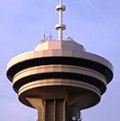
A (very brief) Guide to Vancouver
Vancouver is a very young city; it wasn’t until after the World Exposition in 1986 before Vancouver changed from a sleepy provincial city to a booming metropolis.
Even today the city continues to expand at a high rate: once abandoned industrial areas have thus turned into fashionable and lively districts such as Yaletown and Coal Harbour.
Predominant Architecture:
Vancouverism is a term that refers to tall, but widely separated, slender towers interspersed with low-rise buildings, public spaces, small parks and pedestrian-friendly streetscapes and facades to minimize the impact of a high density population.
However, Vancouverism is more of an architectual technique rather than style. Vancouver’s predominent style is Neomodernism, which shares many of the basic characteristics of modernism.
Places to see:
Chinatown: Vancouver’s Chinatown is one of the largest in North America. The neighborhood’s main attraction is the beautiful Dr. Sun-Yat-Sen garden, an authentic Chinese garden.
Gastown: Named after the saloon proprietor Gassy Jack Deighton, is the area where Vancouver was founded in 1867. The historic area is especially popular with tourists.
Granville Island: In the 1970s this former industrial site was turned into a recreational and entertainment area. The popular island is best known for its indoor public market.
Canada Place: One of Vancouver’s main landmarks, originally built for the 1986 World Exposition. The building is now mainly used as a convention center.
Stanley Park: A 1000-acres large park on a peninsula bordering downtown Vancouver. This forest-like park, surrounded by the ocean, comprises many recreational areas.
Robson Street: Vancouver’s main retail strip, ideal for shopping and dining. Some of the city’s attractions are located here, such as the Art Gallery and the modern library building.